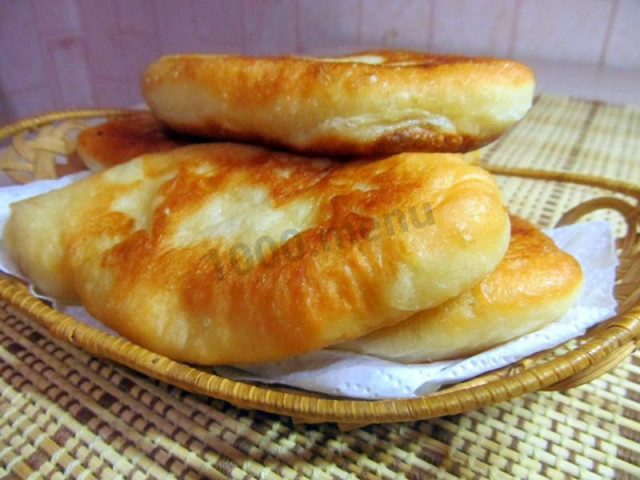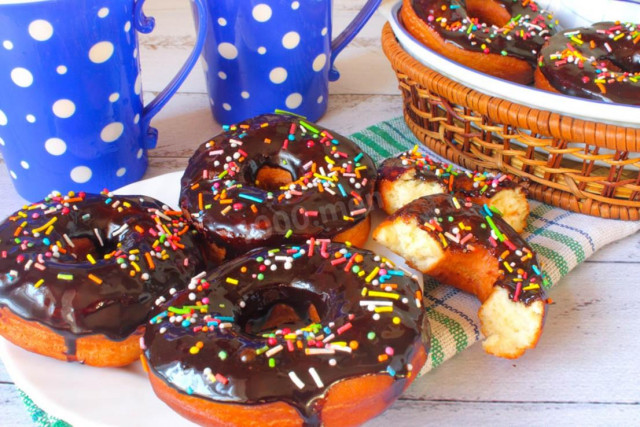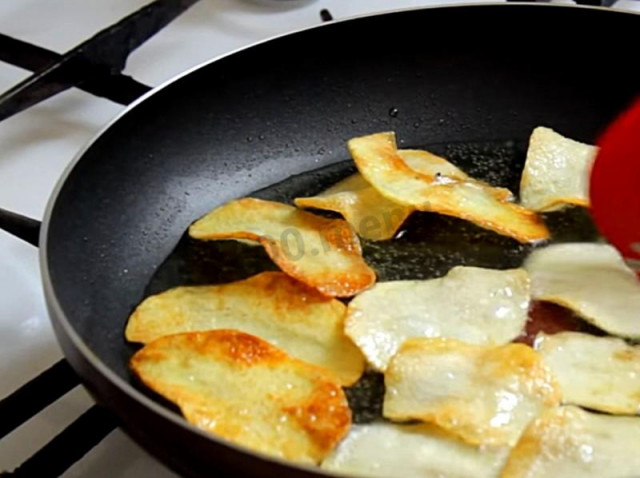Composition / ingredients
Step-by-step cooking
Step 1:
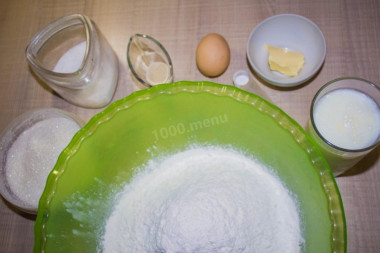
How to make lacums? Measure the products according to the list. Take wheat flour of the highest grade, soft butter. All products should preferably be warm. Sift the flour in advance through a fine sieve into a deep bowl.
Step 2:

Pour the kefir into a saucepan with a thick bottom. Turn the stove on low heat and heat the kefir, stirring, to 30-35 degrees. Measure the temperature with a kitchen thermometer.
Step 3:
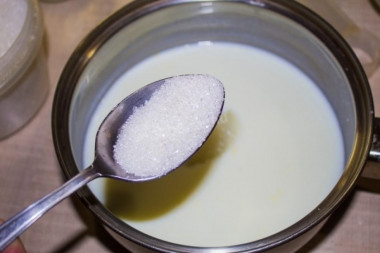
While the kefir is warming, dissolve the sugar in it. Turn off the stove, leave the pan on it.
Step 4:
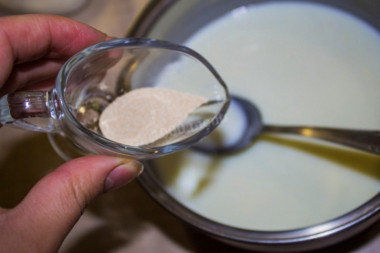
Add dry yeast to kefir.
Step 5:
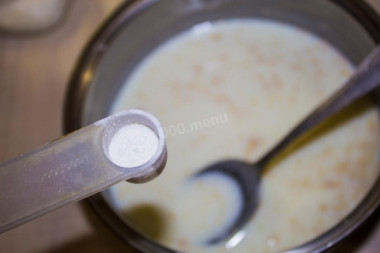
Add soda.
Step 6:

Add salt.
Step 7:
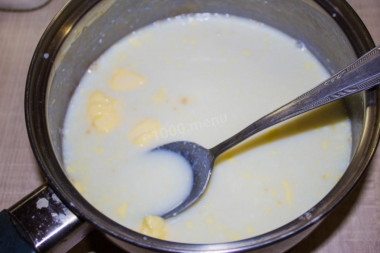
Add softened butter. It should dissolve in warm kefir. Or you can melt it separately. Stir the mixture until the oil is completely dissolved.
Step 8:
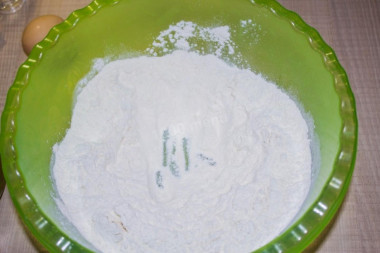
Make a recess in the sifted flour.
Step 9:
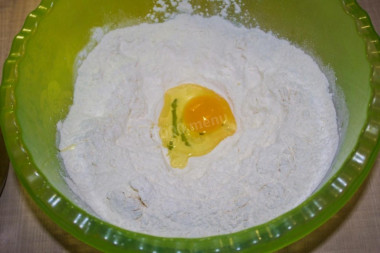
Beat a raw egg into it.
Step 10:
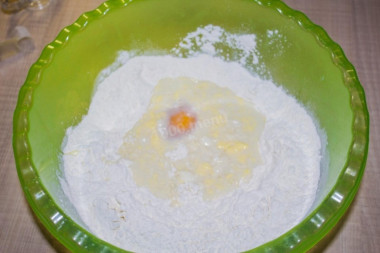
Pour in warm kefir.
Step 11:
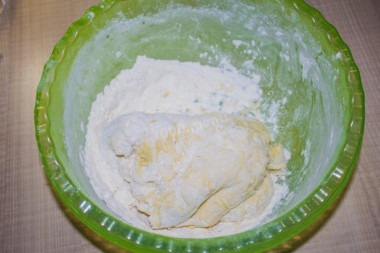
Start kneading the dough with your hands, collecting the flour gradually from the edges to the center. Be guided by the appearance of the dough, and not by the amount of added flour, because it may need either more or less.
Step 12:
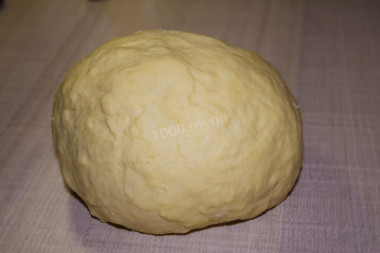
Continue kneading the dough on the table for another 5-7 minutes. As a result, it should turn out pretty cool, not sticky.
Step 13:
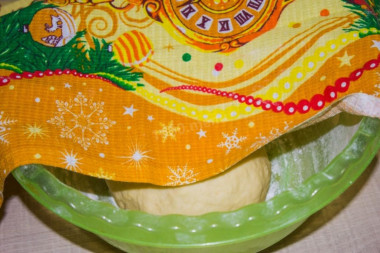
Cover the dough with a towel and leave it in a warm place for at least 2 hours. This dough is heavy, so it takes longer to rise than usual.
Step 14:

After 2 hours, my dough rose well.
Step 15:
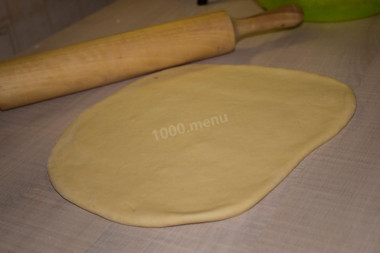
Roll out the dough on the work surface of the table not thinly, 1.5-2 cm thick. Its consistency is such that it should not stick to either the table or the rolling pin.
Step 16:

Cut the dough layer into squares of about 5x5 cm each.
Step 17:
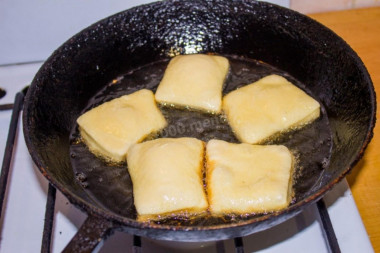
There are only lacumas left to fry! This should be done deep-fried in a large amount of vegetable oil so that they literally float in it. When we put them in a preheated frying pan, we see that they literally begin to inflate and quickly increase in volume (they increased about 4-5 times for me).
Step 18:
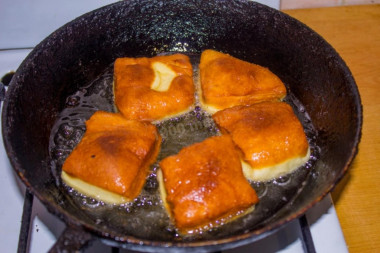
Flip the lacums and fry them on the other side. And they fry very quickly - about 2-3 minutes. Make sure that no liquid gets into the pan, otherwise the oil will start splashing.
Step 19:
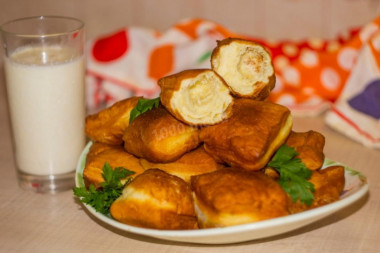
These are the lacums we got: lush, porous, airy, fragrant! Enjoy your meal!
I met this wonderful pastry by chance quite recently - I just cooked a recipe I liked from a cookbook, and I can say with confidence that I will cook it more than once. There are a lot of recipes for lacums, like recipes for pancakes or pancakes, you can add more sugar to them and you will get something similar to brushwood, or you can eat instead of a bun with tan, ayran or the same kefir - it will be very tasty! Lakums are wonderfully combined with fresh vegetables and pickled cheeses! Try it and you, especially since they are prepared very simply!
Be prepared for the fact that you may need more or less flour than indicated in the recipe. Focus not on the amount of flour, but on the desired consistency of the dough. To avoid mistakes, read about flour and its properties!
Use oil with a high smoking temperature for frying! Any oils are useful only until a certain temperature is reached - the point of smoking, at which the oil begins to burn and toxic substances, including carcinogens, are formed in it.
Unrefined oils, with rare exceptions, have a low smoking point. There are a lot of unfiltered organic particles in them, which quickly begin to burn.
Refined oils are more resistant to heating, and their smoking point is higher. If you are going to cook food in the oven, on a frying pan or grill, make sure that you use oil with a high smoking point. The most common of the oils with a high smoking point: refined varieties of sunflower, olive and grape.
Caloric content of the products possible in the composition of the dish
- Chicken egg - 157 kcal/100g
- Egg white - 45 kcal/100g
- Egg powder - 542 kcal/100g
- Egg yolk - 352 kcal/100g
- Ostrich egg - 118 kcal/100g
- Granulated sugar - 398 kcal/100g
- Sugar - 398 kcal/100g
- Kefir fat - 62 kcal/100g
- Kefir of 1% fat content - 38 kcal/100g
- Low-fat kefir - 30 kcal/100g
- Kefir "doctor beefy" 1,8% fat content - 45 kcal/100g
- Kefir 2.5% fat content - 53 kcal/100g
- Butter 82% - 734 kcal/100g
- Amateur unsalted butter - 709 kcal/100g
- Unsalted peasant butter - 661 kcal/100g
- Peasant salted butter - 652 kcal/100g
- Melted butter - 869 kcal/100g
- Vegetable oil - 873 kcal/100g
- Salt - 0 kcal/100g
- Wheat flour - 325 kcal/100g
- Baking soda - 0 kcal/100g
- Dry yeast - 410 kcal/100g



